
Portable Network Graphics is a raster-graphics file format that supports lossless data compression. PNG was developed as an improved, non-patented replacement for Graphics Interchange Format (GIF)—unofficially, the initials PNG stood for the recursive acronym "PNG's not GIF".

In computer graphics and digital photography, a raster graphic represents a two-dimensional picture as a rectangular matrix or grid of square pixels, viewable via a computer display, paper, or other display medium. A raster is technically characterized by the width and height of the image in pixels and by the number of bits per pixel. Raster images are stored in image files with varying dissemination, production, generation, and acquisition formats.

Vector graphics are a form of computer graphics in which visual images are created directly from geometric shapes defined on a Cartesian plane, such as points, lines, curves and polygons. The associated mechanisms may include vector display and printing hardware, vector data models and file formats, as well as the software based on these data models. Vector graphics is an alternative to raster or bitmap graphics, with each having advantages and disadvantages in specific situations.
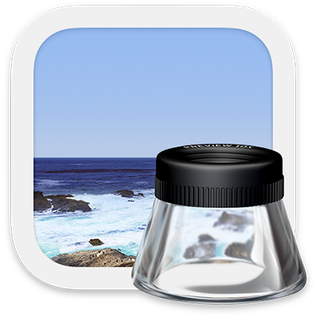
Preview is the built-in image viewer and PDF viewer of the macOS operating system. In addition to viewing and printing digital images and Portable Document Format (PDF) files, it can also edit these media types. It employs the Aqua graphical user interface, the Quartz graphics layer, and the ImageIO and Core Image frameworks.

Inkscape is a free and open-source vector graphics editor for traditional Unix-compatible systems such as GNU/Linux, BSD derivatives and Illumos, as well as Windows and macOS. It offers a rich set of features and is widely used for both artistic and technical illustrations such as cartoons, clip art, logos, typography, diagramming and flowcharting. It uses vector graphics to allow for sharp printouts and renderings at unlimited resolution and is not bound to a fixed number of pixels like raster graphics. Inkscape uses the standardized Scalable Vector Graphics (SVG) file format as its main format, which is supported by many other applications including web browsers. It can import and export various other file formats, including SVG, AI, EPS, PDF, PS and PNG.
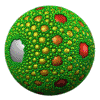
Transparency in computer graphics is possible in a number of file formats. The term "transparency" is used in various ways by different people, but at its simplest there is "full transparency" i.e. something that is completely invisible. Only part of a graphic should be fully transparent, or there would be nothing to see. More complex is "partial transparency" or "translucency" where the effect is achieved that a graphic is partially transparent in the same way as colored glass. Since ultimately a printed page or computer or television screen can only be one color at a point, partial transparency is always simulated at some level by mixing colors. There are many different ways to mix colors, so in some cases transparency is ambiguous.

Xfig is a free and open-source vector graphics editor which runs under the X Window System on most UNIX-compatible platforms.

Adobe Fireworks was a bitmap and vector graphics editor, which Adobe acquired in 2005. Fireworks was made for web designers for rapidly creating website prototypes and application interfaces. Its features included slices, which are segments of an image that are converted to HTML elements, and the ability to add hotspots, which are segments of an image that are converted to hyperlinks. It was designed to integrate with other Adobe products such as Adobe Dreamweaver and Adobe Flash. It was available as either a standalone product or bundled with Adobe Creative Suite. Older versions were bundled with Macromedia Studio. Adobe discontinued Fireworks in 2013, citing the increasing overlap in functionality with its other products such as Adobe Photoshop, Adobe Illustrator, and Adobe Edge.
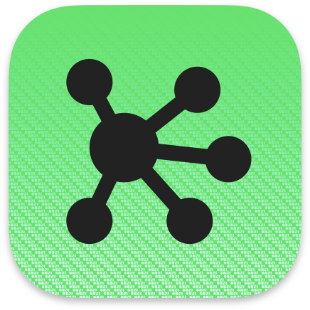
OmniGraffle is a diagramming and digital illustration application for macOS and iOS created by The Omni Group.
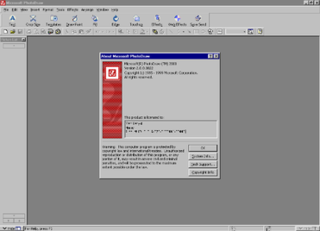
Microsoft PhotoDraw was a vector graphics and raster image editing software developed by Microsoft. It was released in 1999 as part of the Microsoft Office 2000 family of products and was specifically designed for creating and editing graphics, illustrations, and photo compositions.
A number of vector graphics editors exist for various platforms. Potential users of these editors will make a comparison of vector graphics editors based on factors such as the availability for the user's platform, the software license, the feature set, the merits of the user interface (UI) and the focus of the program. Some programs are more suitable for artistic work while others are better for technical drawings. Another important factor is the application's support of various vector and bitmap image formats for import and export.
An image file format is a file format for a digital image. There are many formats that can be used, such as JPEG, PNG, and GIF. Most formats up until 2022 were for storing 2D images, not 3D ones. The data stored in an image file format may be compressed or uncompressed. If the data is compressed, it may be done so using lossy compression or lossless compression. For graphic design applications, vector formats are often used. Some image file formats support transparency.
In computer graphics, image tracing, raster-to-vector conversion or raster vectorization is the conversion of raster graphics into vector graphics.
A region of interest is a sample within a data set identified for a particular purpose. The concept of a ROI is commonly used in many application areas. For example, in medical imaging, the boundaries of a tumor may be defined on an image or in a volume, for the purpose of measuring its size. The endocardial border may be defined on an image, perhaps during different phases of the cardiac cycle, for example, end-systole and end-diastole, for the purpose of assessing cardiac function. In geographical information systems (GIS), a ROI can be taken literally as a polygonal selection from a 2D map. In computer vision and optical character recognition, the ROI defines the borders of an object under consideration. In many applications, symbolic (textual) labels are added to a ROI, to describe its content in a compact manner. Within a ROI may lie individual points of interest (POIs).

DrawPlus is a 2D vector graphics editor and animation software developed by the UK-based software company Serif, also responsible for PhotoPlus, PagePlus, WebPlus, Digital Scrapbook Artist, Affinity Designer, Affinity Photo and other titles.

Ipe extensible drawing editor is a free vector graphics editor for creating figures in PDF or EPS format. It can be used for making small figures for inclusion into LaTeX documents as well as making multi-page PDF presentations. It is developed by Otfried Cheong since 1993 and initially worked on SGI workstations only. Ipe 6 was released in 2003 which changed the file format into XML code embedded into PDF and EPS files. Ipe 7 was released in 2009. Ipe 7 can be compiled under Windows, macOS and Unix but binaries are available for many distributions.
In computing, a bitmap is a mapping from some domain to bits. It is also called a bit array or bitmap index.

PhotoLine is a graphics editor for Windows, MacOS X and Linux/WINE. Its capabilities include 16 bits of color depth full-color or management, support of RGB, CMYK, and Lab color models, layer support, and non-destructive image manipulation. We can use it for desktop publishing.
Paintbrush is a raster graphics editor for Mac OS X. It aims to replace MacPaint, an image editor for the classic Mac OS last released in 1988. It also is an alternative to Microsoft Paint. It has basic raster image editing capabilities and a simple interface designed for ease of use. It exports as PNG, JPG, BMP, GIF, and TIFF. The application also is often used for pixel art because of its grid option, and is not made for large scale images or GIMP or Photoshop-like editing on pictures or photographs.
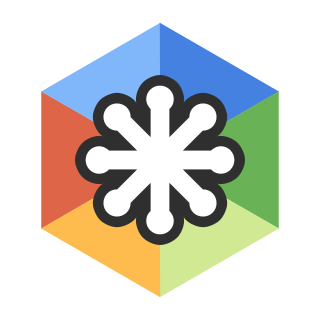
Boxy SVG is a vector graphics editor for creating illustrations, as well as logos, icons, and other elements of graphic design. It is primarily focused on editing drawings in the SVG file format. The program is available as both a web app and a desktop application for Windows, macOS, ChromeOS, and Linux-based operating systems.











